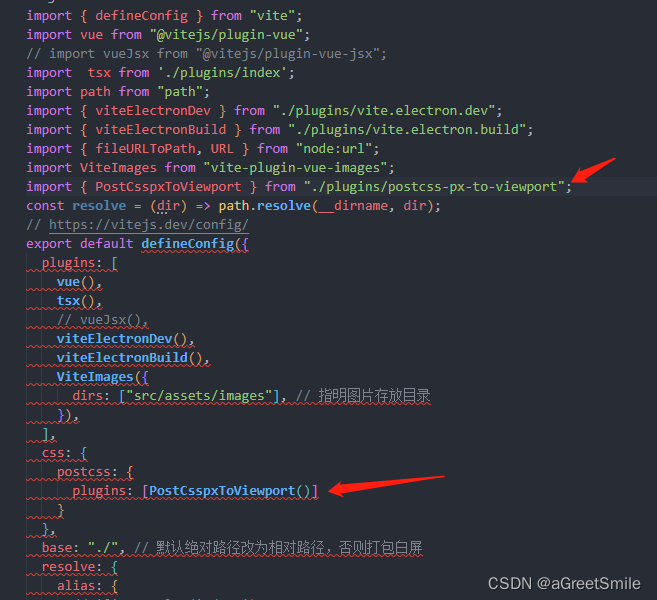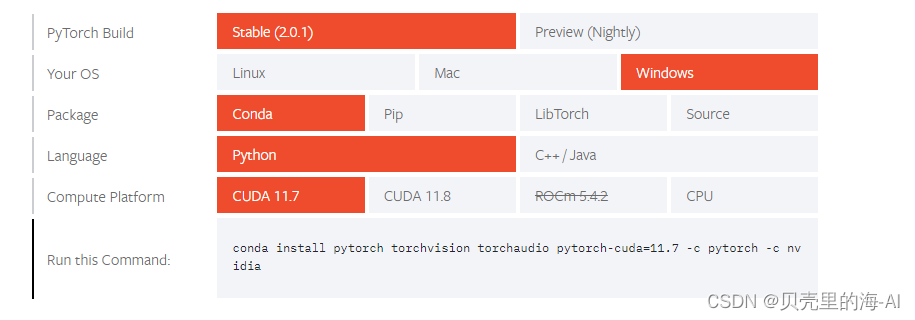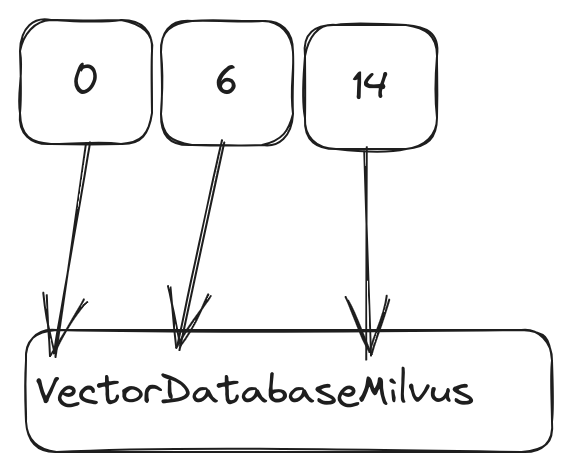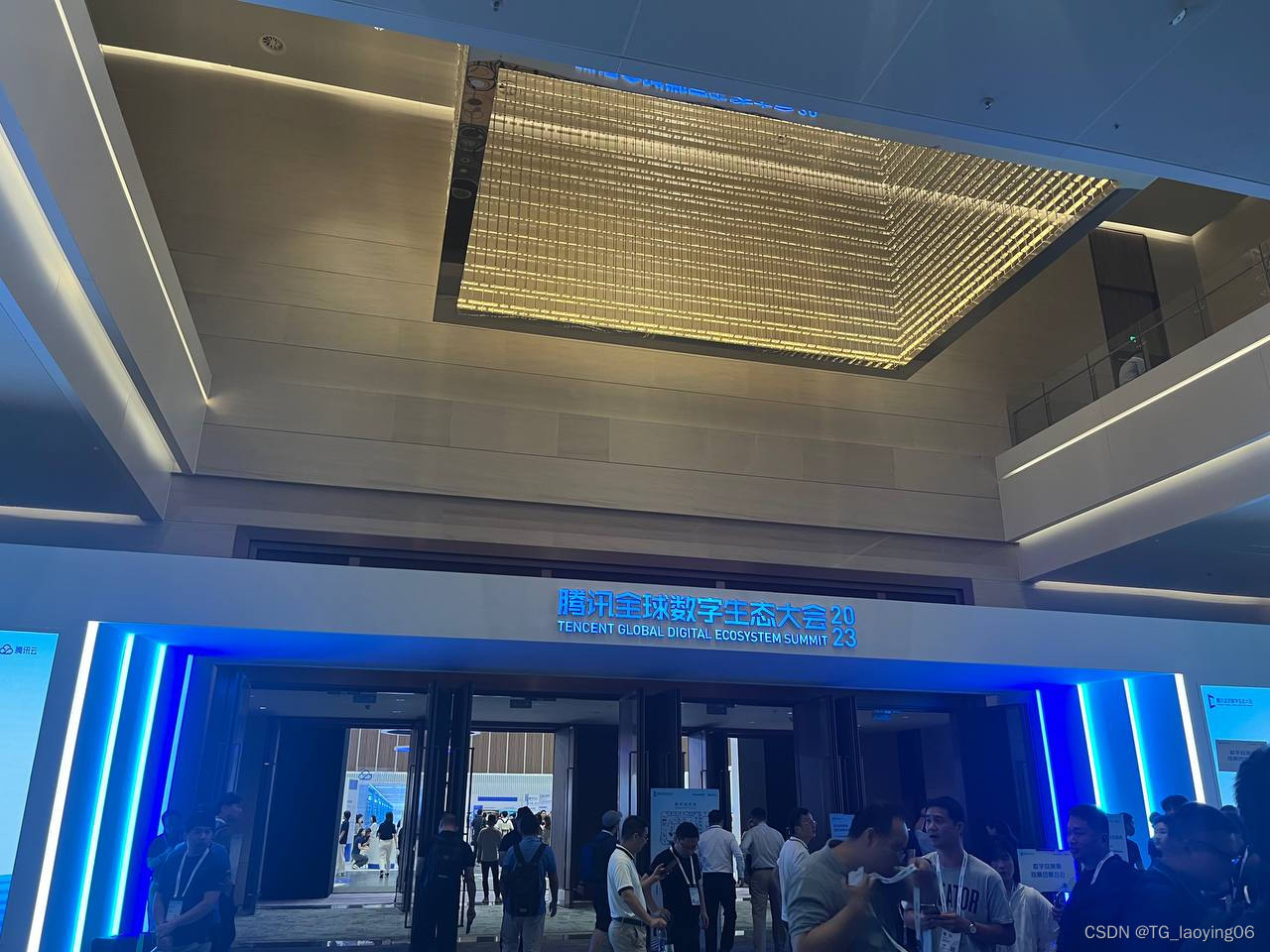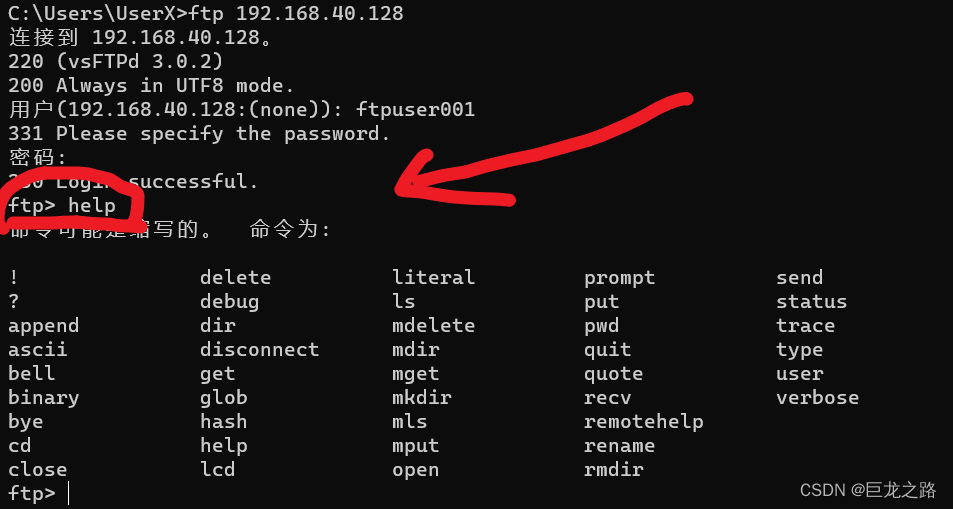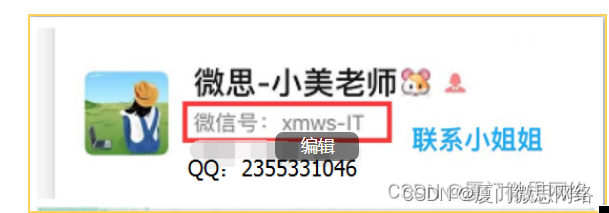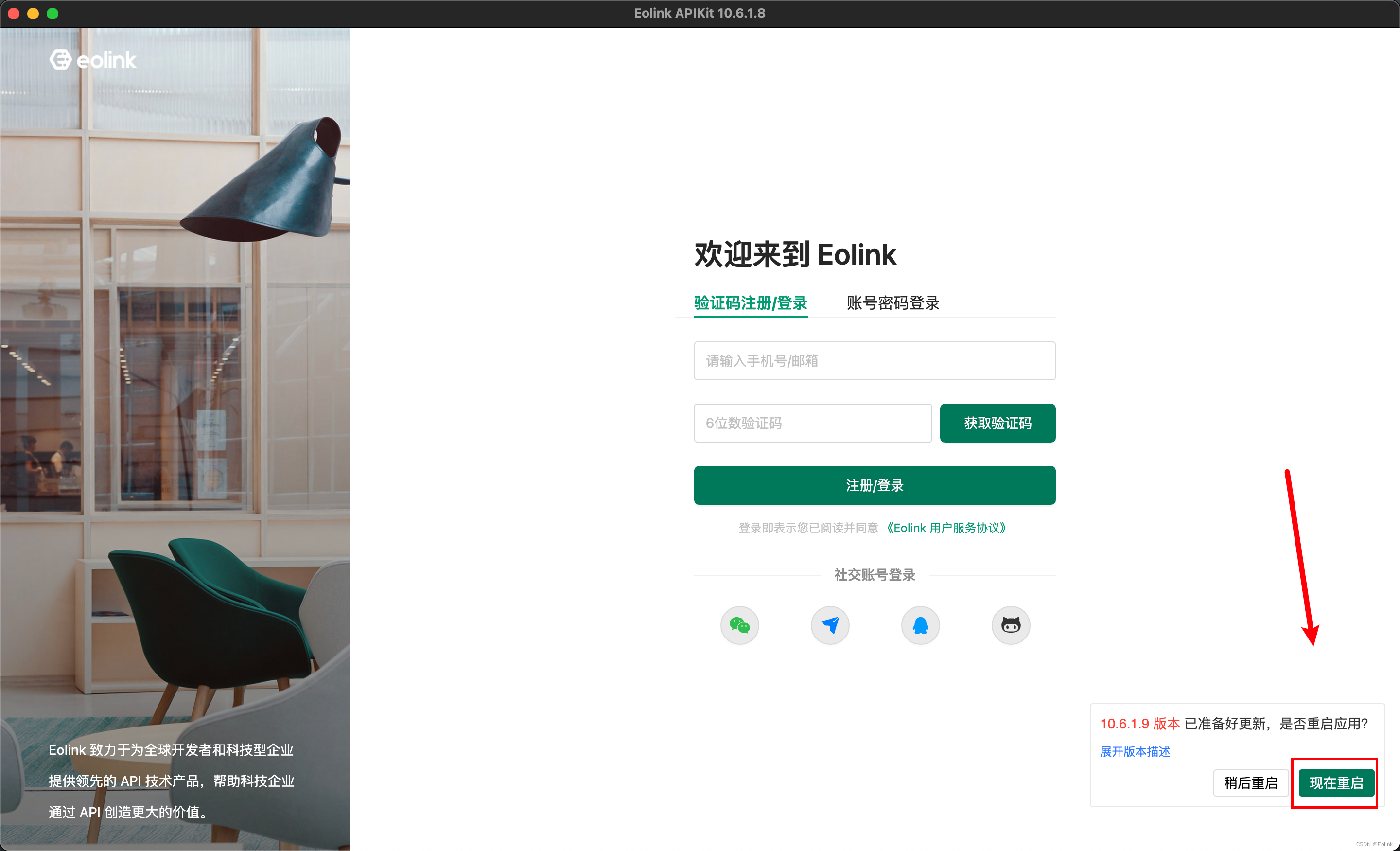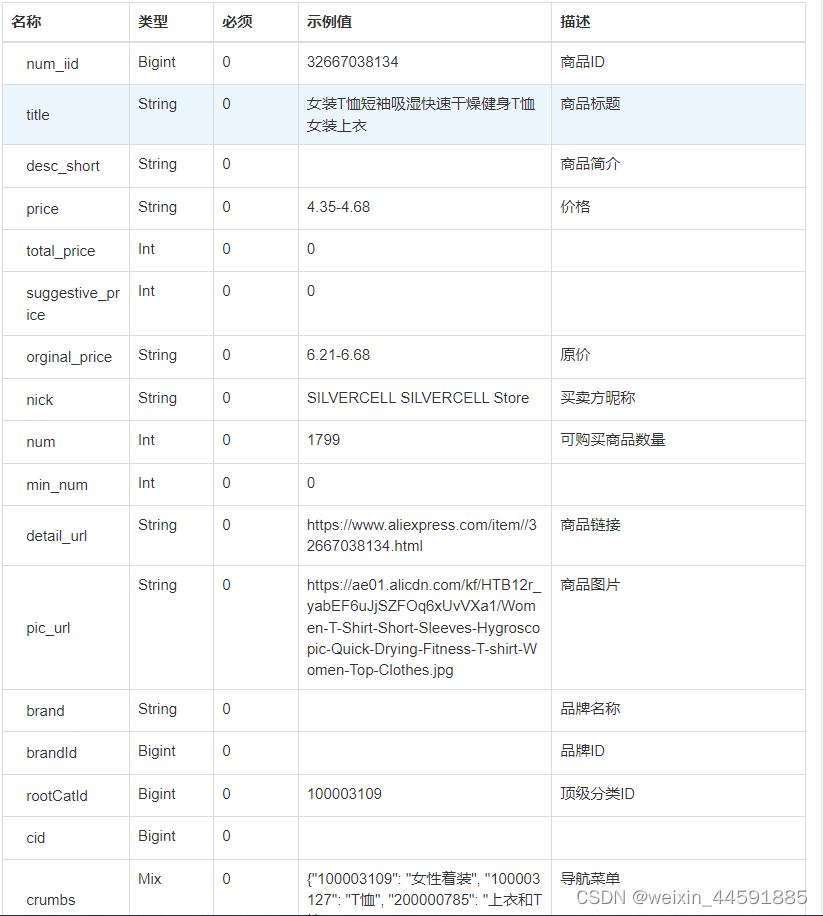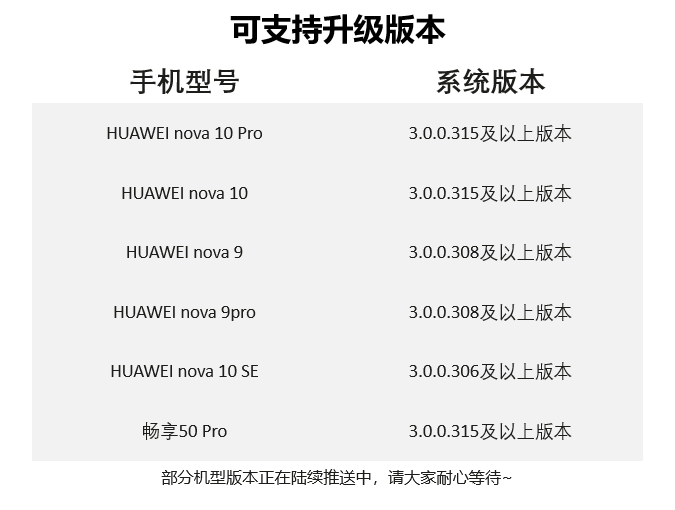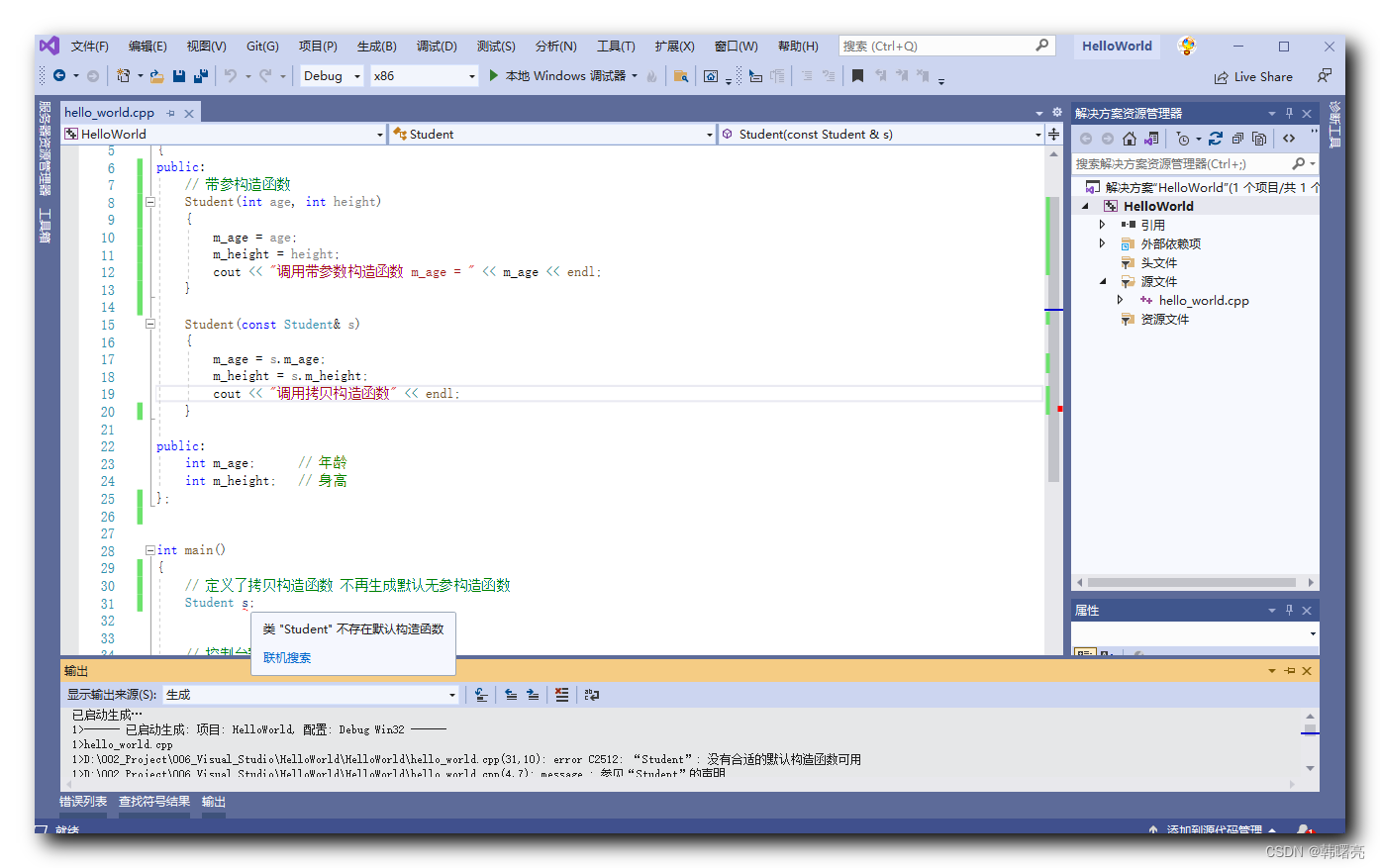分页插件Pagehelper源码分析
- 一、插件机制
- 二、Pagehelper源码分析
前文叙述过以下内容:Mybatis对动态代理的使用,一二级缓存和懒加载的原理。其中二级缓存解释了在分布式环境下可能出现缓存不一致问题,但没说解决方案。其实个人认为这种问题除非数据库集群等机制,不然个人认为一个服务大概率就对应的一个持久化层,很少会出现不一致的问题,如果有这边还是建议不使用二级缓存就是了,或者自己写个缓存解决我觉得挺好(没遇到过🤣🤣🤣)。
动态代理的使用(Javassist、CGLIB、JDK动态代理)
Mybatis查询流程(一级、二级缓存、懒加载原理)
Mybatis 除了前面源码分析到的那些核心部分,Mybatis 还提供了一强大的功能,即支持插件机制。Mybatis支持对Executor、StatementHandler、ParameterHandler和ResultSetHandler进行拦截,也就是说会对这4种对象进行代理,这就是插件的功能。针对插件机制的核心原理和我们常用的Pagehelper源码分析接下来由小编阐述一下。
一、插件机制
关于插件机制的概述,下面这文我觉得解释得很清楚了(看完下面这文的话可以直接跳到下面的Pagehelper源码分析去看)
MyBatis详解 - 插件机制
下面只解释核心部分(像Mybatis解析插件配置等等就不阐述了)
下面是Mybatis解析配置的插件后封装到的拦截器链,这后面插件机制的处理生成代理链的使用类。该拦截器链解析完配置后封装到了熟悉的 Configuration 中。
public class InterceptorChain {
private final List<Interceptor> interceptors = new ArrayList<>();
// 这个用于后续生成代理链
public Object pluginAll(Object target) {
for (Interceptor interceptor : interceptors) {
target = interceptor.plugin(target);
}
return target;
}
// 在解析插件配置时,会把解析到的实例化拦截器然后封装到这过滤器链中
public void addInterceptor(Interceptor interceptor) {
interceptors.add(interceptor);
}
public List<Interceptor> getInterceptors() {
return Collections.unmodifiableList(interceptors);
}
}
咱查看一下 pluginAll 方法在项目中的用法。
 Mybatis 允许你在已映射语句执行过程中的某一点进行拦截调用。默认情况下,Mybatis 允许使用插件来拦截方法调用包括:
Mybatis 允许你在已映射语句执行过程中的某一点进行拦截调用。默认情况下,Mybatis 允许使用插件来拦截方法调用包括:
- Executor(update、query、flushStatement、commit、rollback、getTransaction、close、isClosed)拦截执行器的方法。PageInterceptor 就是对 query 方法进行拦截。
- ParameterHandler(getParameterObject,setParameters)拦截结果集的处理
- ResultSetHandler(handlerResults,handleOutputParameters)拦截结果集的处理。
- StatementHandler(prepare,parameterize、batch、update、query)拦截sql语法构建的处理。
Mybatis 采用责任链的模式,通过动态代理组织多个拦截器(插件),通过这些拦截器可以改变Mybatis的默认行为(诸如SQL重写之类的),由于插件会深入到Mybatis的核心,因此在编写自己的插件前最好了解下它的原理,以便写出高效的插件。
下面看看 Interceptor 的底层源码,其中 plugin 和 setProperties 是默认方法,注意这个 Plugin.wrap(target,this) 它底层用了动态代理,一个拦截接着一个拦截器代理,然后就产生了一个代理链,看完下面拦截器的源码,咱来看看 Plugin.wrap 源码实现。
public interface Interceptor {
Object intercept(Invocation invocation) throws Throwable;
default Object plugin(Object target) {
return Plugin.wrap(target, this);
}
default void setProperties(Properties properties) {
// NOP
}
}
下面是对 Plugin 的源码分析,实现了 InvocationHandler 接口。
//这个类是Mybatis拦截器的核心,大家可以看到该类继承了InvocationHandler
//又是JDK动态代理机制
public class Plugin implements InvocationHandler {
//目标对象
private Object target;
//拦截器
private Interceptor interceptor;
//记录需要被拦截的类与方法
private Map<Class<?>, Set<Method>> signatureMap;
private Plugin(Object target, Interceptor interceptor, Map<Class<?>, Set<Method>> signatureMap) {
this.target = target;
this.interceptor = interceptor;
this.signatureMap = signatureMap;
}
//一个静态方法,对一个目标对象进行包装,生成代理类。
public static Object wrap(Object target, Interceptor interceptor) {
//首先根据interceptor上面定义的注解 获取需要拦截的信息
Map<Class<?>, Set<Method>> signatureMap = getSignatureMap(interceptor);
//目标对象的Class
Class<?> type = target.getClass();
//返回需要拦截的接口信息
Class<?>[] interfaces = getAllInterfaces(type, signatureMap);
//如果长度为>0 则返回代理类 否则不做处理
if (interfaces.length > 0) {
return Proxy.newProxyInstance(
type.getClassLoader(),
interfaces,
new Plugin(target, interceptor, signatureMap));
}
return target;
}
//代理对象每次调用的方法
public Object invoke(Object proxy, Method method, Object[] args) throws Throwable {
try {
//通过method参数定义的类 去signatureMap当中查询需要拦截的方法集合
Set<Method> methods = signatureMap.get(method.getDeclaringClass());
//判断是否需要拦截
if (methods != null && methods.contains(method)) {
return interceptor.intercept(new Invocation(target, method, args));
}
//不拦截 直接通过目标对象调用方法
return method.invoke(target, args);
} catch (Exception e) {
throw ExceptionUtil.unwrapThrowable(e);
}
}
//根据拦截器接口(Interceptor)实现类上面的注解获取相关信息
private static Map<Class<?>, Set<Method>> getSignatureMap(Interceptor interceptor) {
//获取注解信息
Intercepts interceptsAnnotation = interceptor.getClass().getAnnotation(Intercepts.class);
//为空则抛出异常
if (interceptsAnnotation == null) { // issue #251
throw new PluginException("No @Intercepts annotation was found in interceptor " + interceptor.getClass().getName());
}
//获得Signature注解信息
Signature[] sigs = interceptsAnnotation.value();
Map<Class<?>, Set<Method>> signatureMap = new HashMap<Class<?>, Set<Method>>();
//循环注解信息
for (Signature sig : sigs) {
//根据Signature注解定义的type信息去signatureMap当中查询需要拦截方法的集合
Set<Method> methods = signatureMap.get(sig.type());
//第一次肯定为null 就创建一个并放入signatureMap
if (methods == null) {
methods = new HashSet<Method>();
signatureMap.put(sig.type(), methods);
}
try {
//找到sig.type当中定义的方法 并加入到集合
Method method = sig.type().getMethod(sig.method(), sig.args());
methods.add(method);
} catch (NoSuchMethodException e) {
throw new PluginException("Could not find method on " + sig.type() + " named " + sig.method() + ". Cause: " + e, e);
}
}
return signatureMap;
}
//根据对象类型与signatureMap获取接口信息
private static Class<?>[] getAllInterfaces(Class<?> type, Map<Class<?>, Set<Method>> signatureMap) {
Set<Class<?>> interfaces = new HashSet<Class<?>>();
//循环type类型的接口信息 如果该类型存在与signatureMap当中则加入到set当中去
while (type != null) {
for (Class<?> c : type.getInterfaces()) {
if (signatureMap.containsKey(c)) {
interfaces.add(c);
}
}
type = type.getSuperclass();
}
//转换为数组返回
return interfaces.toArray(new Class<?>[interfaces.size()]);
}
}
其中核心方法就是 invoke 方法,因为是代理吗,那它最后执行就是这个 invoke 方法咯,所以关注一下这个 invoke 方法,如果执行的方法是咱定义的话会走 Interceptor.interceptor 方法。return interceptor.intercept(new Invocation(target, method, args)); 传的 Invocation 实例可以看见传了 target,method,args 方法。
interceptor.pluginAll 方法在以下地方被调用:
public ParameterHandler newParameterHandler(MappedStatement mappedStatement, Object parameterObject, BoundSql boundSql) {
ParameterHandler parameterHandler = mappedStatement.getLang().createParameterHandler(mappedStatement, parameterObject, boundSql);
parameterHandler = (ParameterHandler) interceptorChain.pluginAll(parameterHandler);
return parameterHandler;
}
public ResultSetHandler newResultSetHandler(Executor executor, MappedStatement mappedStatement, RowBounds rowBounds, ParameterHandler parameterHandler, ResultHandler resultHandler, BoundSql boundSql) {
ResultSetHandler resultSetHandler = new DefaultResultSetHandler(executor, mappedStatement, parameterHandler, resultHandler, boundSql, rowBounds);
resultSetHandler = (ResultSetHandler) interceptorChain.pluginAll(resultSetHandler);
return resultSetHandler;
}
public StatementHandler newStatementHandler(Executor executor, MappedStatement mappedStatement, Object parameterObject, RowBounds rowBounds, ResultHandler resultHandler, BoundSql boundSql) {
StatementHandler statementHandler = new RoutingStatementHandler(executor, mappedStatement, parameterObject, rowBounds, resultHandler, boundSql);
statementHandler = (StatementHandler) interceptorChain.pluginAll(statementHandler);
return statementHandler;
}
public Executor newExecutor(Transaction transaction, ExecutorType executorType, boolean autoCommit) {
executorType = executorType == null ? defaultExecutorType : executorType;
executorType = executorType == null ? ExecutorType.SIMPLE : executorType;
Executor executor;
if (ExecutorType.BATCH == executorType) {
executor = new BatchExecutor(this, transaction);
} else if (ExecutorType.REUSE == executorType) {
executor = new ReuseExecutor(this, transaction);
} else {
executor = new SimpleExecutor(this, transaction);
}
if (cacheEnabled) {
executor = new CachingExecutor(executor, autoCommit);
}
executor = (Executor) interceptorChain.pluginAll(executor);
return executor;
}
现在的话可以梳理一下了:
interceptorChain.pluginAll 在Mybatis中四处被调用(上面指出了),它上面解释了是一个代理链对象,就是说一个插件就是写一个代理,一个插件的核心在它的 interceptor 方法中,参数是 Invocation 实例对象,从这个实例对象中可以获取 实例对象、参数、和对应的那个方法,然后自定义你想的操作。
代理时它会判断是否是你要执行的那个方法,如果不是的话会直接执行方法,也就是往下一个代理走。
二、Pagehelper源码分析
首先看 PageInterceptor 是对哪个进行拦截,来看看它的注解。可以看见是对 Executor.query 方法进行拦截。
@Intercepts(
{
@Signature(type = Executor.class, method = "query", args = {MappedStatement.class, Object.class, RowBounds.class, ResultHandler.class}),
@Signature(type = Executor.class, method = "query", args = {MappedStatement.class, Object.class, RowBounds.class, ResultHandler.class, CacheKey.class, BoundSql.class}),
}
)
刚刚说了一个插件的形成就是它的核心方法 intercepor
@Override
public Object intercept(Invocation invocation) throws Throwable {
try {
Object[] args = invocation.getArgs();
MappedStatement ms = (MappedStatement) args[0];
Object parameter = args[1];
RowBounds rowBounds = (RowBounds) args[2];
ResultHandler resultHandler = (ResultHandler) args[3];
Executor executor = (Executor) invocation.getTarget();
CacheKey cacheKey;
BoundSql boundSql;
//由于逻辑关系,只会进入一次
if (args.length == 4) {
//4 个参数时
boundSql = ms.getBoundSql(parameter);
cacheKey = executor.createCacheKey(ms, parameter, rowBounds, boundSql);
} else {
//6 个参数时
cacheKey = (CacheKey) args[4];
boundSql = (BoundSql) args[5];
}
checkDialectExists();
//对 boundSql 的拦截处理
if (dialect instanceof BoundSqlInterceptor.Chain) {
boundSql = ((BoundSqlInterceptor.Chain) dialect).doBoundSql(BoundSqlInterceptor.Type.ORIGINAL, boundSql, cacheKey);
}
List resultList;
//调用方法判断是否需要进行分页,如果不需要,直接返回结果
// dialect 其实就是对Pagehelper实例对象的封装
// Pagehelper 类是对分页 Page 的一些处理
// 在每个分页阶段都会去执行 Pagehelper 的一个回调
if (!dialect.skip(ms, parameter, rowBounds)) {
//开启debug时,输出触发当前分页执行时的PageHelper调用堆栈
// 如果和当前调用堆栈不一致,说明在启用分页后没有消费,当前线程再次执行时消费,调用堆栈显示的方法使用不安全
debugStackTraceLog();
//判断是否需要进行 count 查询
if (dialect.beforeCount(ms, parameter, rowBounds)) {
//查询总数
Long count = count(executor, ms, parameter, rowBounds, null, boundSql);
//处理查询总数,返回 true 时继续分页查询,false 时直接返回
if (!dialect.afterCount(count, parameter, rowBounds)) {
//当查询总数为 0 时,直接返回空的结果
return dialect.afterPage(new ArrayList(), parameter, rowBounds);
}
}
resultList = ExecutorUtil.pageQuery(dialect, executor,
ms, parameter, rowBounds, resultHandler, boundSql, cacheKey);
} else {
//rowBounds用参数值,不使用分页插件处理时,仍然支持默认的内存分页
resultList = executor.query(ms, parameter, rowBounds, resultHandler, cacheKey, boundSql);
}
return dialect.afterPage(resultList, parameter, rowBounds);
} finally {
if (dialect != null) {
// 去调用 Pagehelper 中的 afterAll,把缓存的 Page 删掉
// Pagehelper 把 Page 对象放在 ThreadLocal 中
dialect.afterAll();
}
}
}
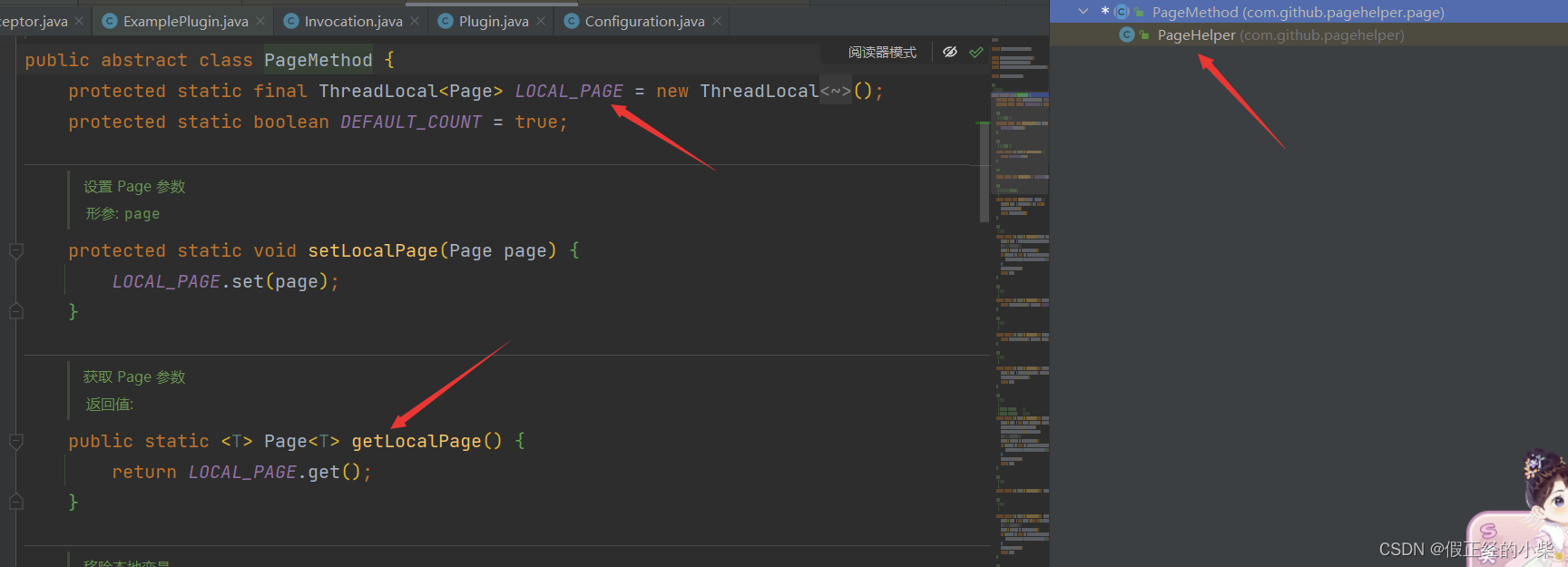 其中 Page 继承了 ArrayList ,到查询到结果集后,会调用 Pagehelper 中的 afterPage 方法,会对结果集的对象浅克隆到 Page 中(调用 System.arrayCopy 方法)。也就是说咱的 Page 就是结果。
其中 Page 继承了 ArrayList ,到查询到结果集后,会调用 Pagehelper 中的 afterPage 方法,会对结果集的对象浅克隆到 Page 中(调用 System.arrayCopy 方法)。也就是说咱的 Page 就是结果。
简单看看其 afterPage 的核心代码:
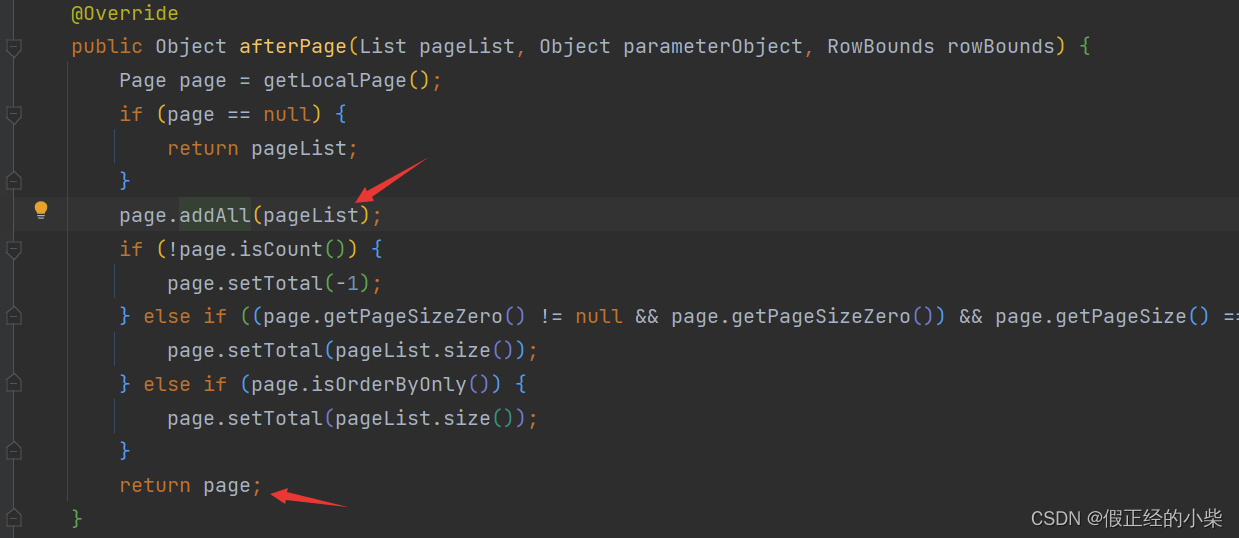
大概知道了分页插件的核心原理后,咱来说说其流程吧。
-
在分页之前,会先去执行查询所有记录条数的sql,然后再判断给的分页参数是否合理什么的;
-
执行查询所有记录的sql,首先是去看看你有没有设有自己的MappedStatement,其id是
id+_COUNT,比如我执行的分页方法是query,那就判断你有没有query_COUNT方法。否则的话Mybatis会为你创一个MappedStatement,这个MappedStatement大部分参数是继承这个查询对应的MappedStatement的参数,比如是否开启二级缓存,那么它会与那个查询对应的MappedStatement公用一个查询Cache,即二级缓存。(有时候是应该自己是写COUNT方法,因为比如你用了软删除什么的字段,而它查询的是总数的) -
二级缓存这里是建议开的,因为如果表很多记录的话,这个查询COUNT的sql执行起来就挺耗时间的。
-
当然 PageInterceptor 会缓存这生成的 MappedStatement 的,不然反复创建相同的 MappedStatement 影响性能,PageInterceptor 中封装了一个
msCountMap属性,该属性在 setProperties 方法中进行了实例化,其就是一个 SimpleCache。这样的话如果下次再在执行 count 的sql时,会先从这个缓存中拿这个 MappedStatement,如果没有的话就新建。

-
然后封装到分页Page数据中,然后去改装原sql为分页sql,即在后面加
limit…然后执行这个sql,最后将结果集对象改装为Page对象返回。
这样的话我们得到的结果集就是 Page 了.
if(list instanceOf Page){Page page = (Page)list;}

